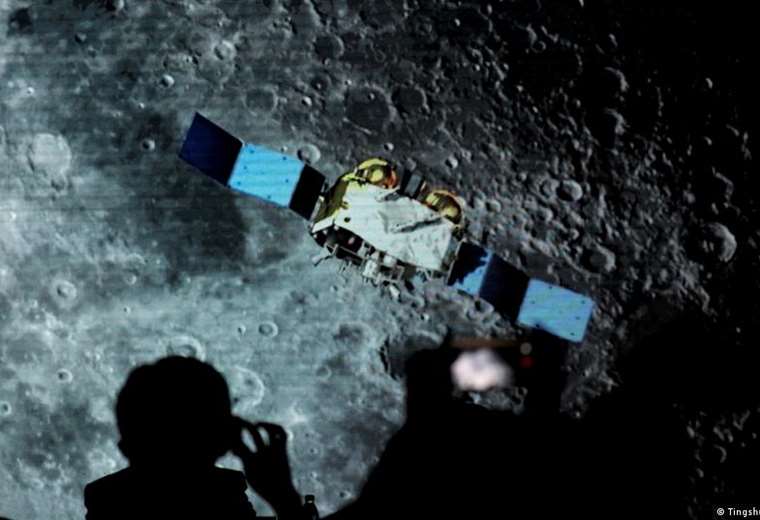March 27, 2023, 20:07 PM
March 27, 2023, 20:07 PM
Chinese researchers discovered that glass spheres on the lunar surface store water inside, a finding that implies the existence of a valuable reserve of this resource for future activities on the Moon, as detailed in a study published this Monday (03.27.2023) by the journal Nature Geoscience.
Crystal spheres, also known as impact crystals, would have formed on the moon by the action of the smelting and subsequent cooling of rocks, after a past volcanic activity and after receiving great impacts from other space objects.
Water formed by the solar wind
The new analyzes of lunar soil samples, recovered in 2020 by the Chinese Chang’e-5 mission, showed that the glass spheres contain water molecules that would have been formed by the action of the solar wind on the lunar surface.
The solar wind is a stream of charged particles, mostly protons and electronswhich emanate outward from the corona, the outermost part of the solar atmosphere, and propagate throughout the solar system.
“The Moon is constantly bombarded by, for example, micrometeoroids and large meteoroids, that produce impact crystals during high-energy flash heating events,” said study co-author Sen Hu, from the Institute of Geology and Geophysics of the Chinese Academy of Sciences.
The spheres work like sponges
Likewise, the interaction of the solar wind with lunar surface materials could sustain a kind of water cycle on the Moon -and on other planets such as Mercury-, in which the glass spheres would absorb the water and act as a reservoir for it, according to the scientists.
“Solar wind-derived water is produced by the reaction of solar hydrogen with oxygen present on the surface of lunar glass spheres,” Hu added, and these impact crystals act as a kind of sponge that absorbs water.
Hu thinks that These types of objects are common in the lunar soil, but he estimates that they are also found throughout the world and evenly distributed, including on planets such as Mercury or the asteroid Vesta.
A useful reserve for future missions
For future exploration of the Moon, including possible lunar bases with the presence of astronauts, water is of vital importance not only for drinking, but also as an ingredient in fuels.
The Moon lacks the masses of liquid water that characterize the Earth, but it is believed that its surface it harbors quite a considerable amount, for example, in ice sheets that reside in places that are permanently in shadow or trapped in minerals.
“Water is the most coveted asset to allow sustainable exploration of planetary surfaces. Knowing how this water is produced, stored and distributed on the lunar surface would be very useful so that future explorers can extract it and use it for exploration purposes” Hu noted.
steam and condensation
The researchers hope to get water from the impact crystals, maybe using a heating process to release vapour, which would then turn into a liquid by condensation: “We can simply heat these glass spheres to release the water stored in them,” said planetary scientist and study co-author Hejiu Hui of the University of Nanjing (China).
The scientists suggest that these impact crystals would store a quantity of water of up to 2,000 parts per million, or about 2,000 grams per ton of soil.
New exploration missions
The Chang’e-5 mission, named after the ancient Chinese moon goddess, was the first by a country to collect samples from the lunar surface since the Soviet Union recovered 170 grams in 1976.
The United States recovered 382 kg of samples during the Apollo program from 1969 to 1972. In 2026, the European Space Agency (ESA) will send a robot to drill into the lunar soil and heat its samples up to 100 degrees to, among other things, identify if there is water trapped in the minerals of the Moon.


















